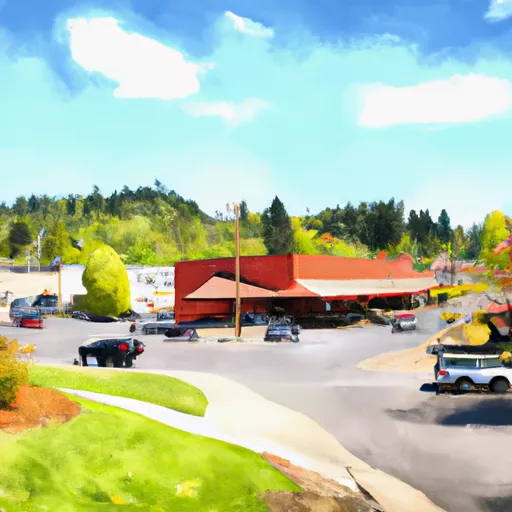-
 Snoflo Premium
Snoflo Premium
Get unlimited access to all our content
With no Ad interruptions! - Start Your Free Trial Login with existing account
Maple-Valley
Eden Index
Climate
9.3
•
Recreation
3.8
•
Community
4.7
•
Safeguard
6.2/10

Maple Valley is a scenic city located in King County, Washington. It experiences a marine-influenced temperate climate characterized by mild, wet winters and warm, dry summers. The average annual temperature in Maple Valley ranges from the mid-40s to the low 70s Fahrenheit, providing residents and visitors with comfortable weather year-round.
Hydrology plays a significant role in Maple Valley, as it is surrounded by numerous bodies of water. The Cedar River, along with its tributaries, flows through the city, enhancing its natural beauty and providing opportunities for water-based activities such as fishing, kayaking, and boating. The city is also home to picturesque lakes, including Lake Wilderness, where visitors can enjoy swimming, paddleboarding, and picnicking.
Maple Valley boasts a wealth of outdoor recreation opportunities. The city is surrounded by lush forests, making it a haven for hikers and nature enthusiasts. The Cedar River Trail is a popular route that meanders through picturesque landscapes, offering stunning views and the chance to spot local wildlife. For golf enthusiasts, the Lake Wilderness Golf Course provides a challenging and scenic 18-hole course.
In summary, Maple Valley offers a pleasant climate, beautiful hydrology constituents, and a range of outdoor recreation opportunities. Whether exploring the waterways, hiking through forests, or enjoying a golf game, outdoor enthusiasts will find plenty to do and experience in this vibrant Washington city. (168 words)
What is the Eden Index?
The Snoflo Eden Index serves as a comprehensive rating system for regions, evaluating their desirability through a holistic assessment of climate health, outdoor recreation opportunities, and natural disaster risk, acknowledging the profound impact of these factors on livability and well-being.
Climate Health Indicator (CHI): 9.3
Maple-Valley receives approximately
1334mm of rain per year,
with humidity levels near 65%
and air temperatures averaging around
11°C.
Maple-Valley has a plant hardyness factor of
8, meaning
plants and agriculture in this region tend to thrive here all year round.
By considering the ideal temperature range, reliable water supplies, clean air, and stable seasonal rain or snowpacks, the Climate Health Indicator (CHI) underscores the significance of a healthy climate as the foundation for quality living.
A healthy climate is paramount for ensuring a high quality of life and livability in a region, fostering both physical well-being and environmental harmony. This can be characterized by ideal temperatures, reliable access to water supplies, clean air, and consistent seasonal rain or snowpacks.
Weather Forecast
Streamflow Conditions
Puget Sound
Area Rivers
Puget Sound
Snowpack Depths
Puget Sound
Reservoir Storage Capacity
Puget Sound
Groundwater Levels
Recreational Opportunity Index (ROI): 3.8
The Recreational Opportunity Index (ROI) recognizes the value of outdoor recreational options, such as parks, hiking trails, camping sites, and fishing spots, while acknowledging that climate plays a pivotal role in ensuring the comfort and consistency of these experiences.
Access to outdoor recreational opportunities, encompassing activities such as parks, hiking, camping, and fishing, is crucial for overall well-being, and the climate plays a pivotal role in enabling and enhancing these experiences, ensuring that individuals can engage in nature-based activities comfortably and consistently.
Camping Areas
| Campground | Campsites | Reservations | Toilets | Showers | Elevation |
|---|---|---|---|---|---|
| Kanaskat Palmer Recreation Area | None | 884 ft | |||
| Ipsut Creek - Mount Rainier National Park | 12 | 2,339 ft | |||
| Tolt MacDonald Park | 40 | 67 ft |
Nearby Fishing
Nearby Ski Areas
Catastrophe Safeguard Index (CSI):
The Catastrophe Safeguard Index (CSI) recognizes that natural disaster risk, encompassing floods, fires, hurricanes, and tornadoes, can drastically affect safety and the overall appeal of an area.
The level of natural disaster risk in a region significantly affects safety and the overall livability, with climate change amplifying these risks by potentially increasing the frequency and intensity of events like floods, fires, hurricanes, and tornadoes, thereby posing substantial challenges to community resilience and well-being.
Community Resilience Indicator (CRI): 4.7
The Community Resilience Indicator (CRI) recognizes that education, healthcare, and socioeconomics are crucial to the well-being of a region. The CRI acknowledges the profound impact of these elements on residents' overall quality of life. By evaluating educational resources, healthcare accessibility, and economic inclusivity, the index captures the essential aspects that contribute to a thriving community, fostering resident satisfaction, equity, and social cohesion.

